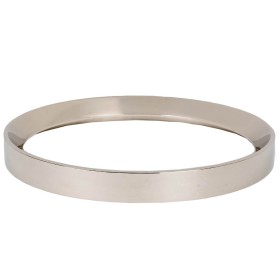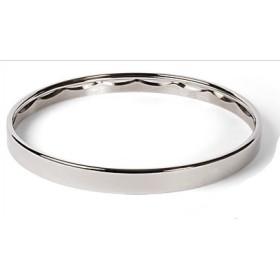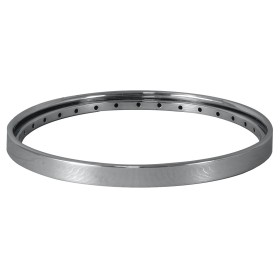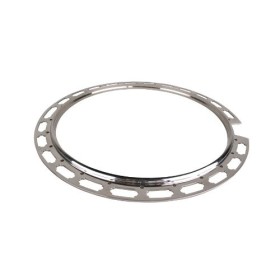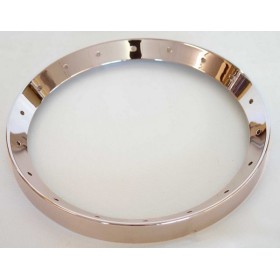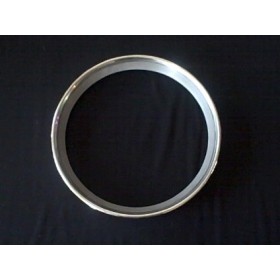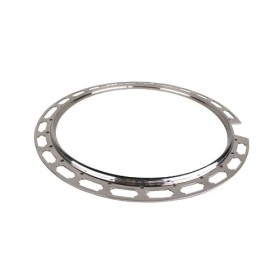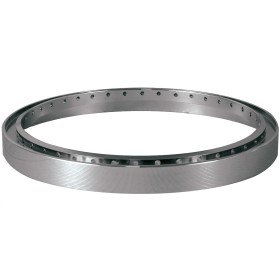JLS Top American Made Replacement Flathead Banjo Tone Rings
These American made tone rings are well known to those who have heard them. The JLS 20 hole tone rings are the rings that Gold Tone has used for many years in their OB-250 Plus. What tipped me off first on the quality of these tone rings was this. Several times while teaching group workshops, with large groups of students that had top of the line expensive American made banjos, I was surprised to hear the OB-250 Plus with the American Made JLS tone ring had the best tone. I recently put one in a Gold Tone OB-150. I couldn't believe the tone of that banjo, I mean that sincerely. Since then, I've put a JLS tone ring in my hand made Bellbird banjo, my 1933 Gibson PB-3 and another custom made banjo of mine. It has made the banjos sound way better up the neck. I has also given them much more volume and tone with a capo on than before.
Check out the videos of the OB-150 Plus I made. The biggest obvious difference in these tone rings was how much volume and tone I still had with a capo on and while playing up the neck.
Many banjos have a good tone in open G, but what separates those and premium tone rings like these is up the neck and with a capo on.
JLS 20 Hole Description Nickel or Gold
The JLS Tone Ring is the most vintage-sounding flathead ring available. Hand sand-cast in the USA, this tone ring features a more rounded head-bearing top edge, which results in increased contact with the head. This gives your banjo a smoother and fuller low-end response.
JLS No Hole Description
For the ultimate no hole vintage flathead sound, look no further than the JLS No Hole Tone Ring. Each ring is hand sand-cast right here in the USA and boasts a unique, more rounded head-bearing top edge. This design maximizes contact with the banjo head, giving you an exceptionally smooth and full low-end.
Description by the JLS Tone Ring inventor, Jim Stull.
My rings are exact copies of the much coveted prewar tone rings. They are 20 hole flathead rings made of the highest quality sand cast bell bronze available. We use this particular bronze alloy because (1) its the correct bronze and (2) it’s composed from virgin component metals, not scrap. This ensures the same metallurgy from batch to batch, and when combined with CNC machining, enables us to maintain the highest level of consistency. The end result is a tone ring which has the same metallurgy, dimensions, weight, and tone response as its prewar predecessor. As such these are “long skirt” tone rings. That is, the skirt (the part you see on the outside of the pot when the banjo is completely set up) is about 0.020 inches longer than most conventional tone rings made today.
The sound produced by these tone rings when installed on a good quality 3 ply or block rim is deep, crisp, and loud. It is even more pronounced when installed on a rim made of 100+ year old rock maple (available from FQMS). Far and away the most distinguishing characteristic of these rings is the amount of base response they produce. As a consequence, they are very well balanced between treble and base, and hold their volume up the neck. You may be interested to know that we’ve done more tone ring conversions on Gibson RB-250’s and Earl Scruggs model banjos than any other make or model banjo made!
BanjoTeacher.com Banjo Supplies Satisfaction Guarantee
15 day satisfaction guarantee on ALL Banjo Supplies. Try it and if for any reason you want to exchange or return, No Problem!
Call or email us for the Best Deal
or Price Match on Banjos: 727-248-8300
FREE SHIPPING ON ALL BANJOS
FREE CASE WITH ALL BANJOS
FREE EXPERT SET UP
FREE ONLINE LESSON MEMBERSHIP
BEGINNER PACKAGES
CAPO SPIKE INSTALLATION
CUSTOM ORDER REQUESTS
FINANCING AVAILABLE![]()
![]()
![]()
![]()
All Credit Cards, Paypal, Amazon Pay, Affirm, Paypal Credit, Afterpay, Klarna

Use Paypal and select Paypal Credit 

Pay in 4 Easy Payments with No Interest
Some Featured Banjos
Deering Sierra, Deering Calico GT OB-300 Gold GT OB-2 Bowtie GT OB-2 AT Archtop ML-1 Baritone Banjo GT Bluegrass Heart![]()


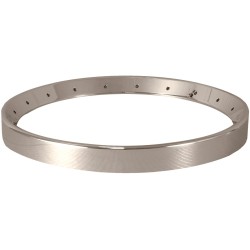






 Reviews
Reviews 
